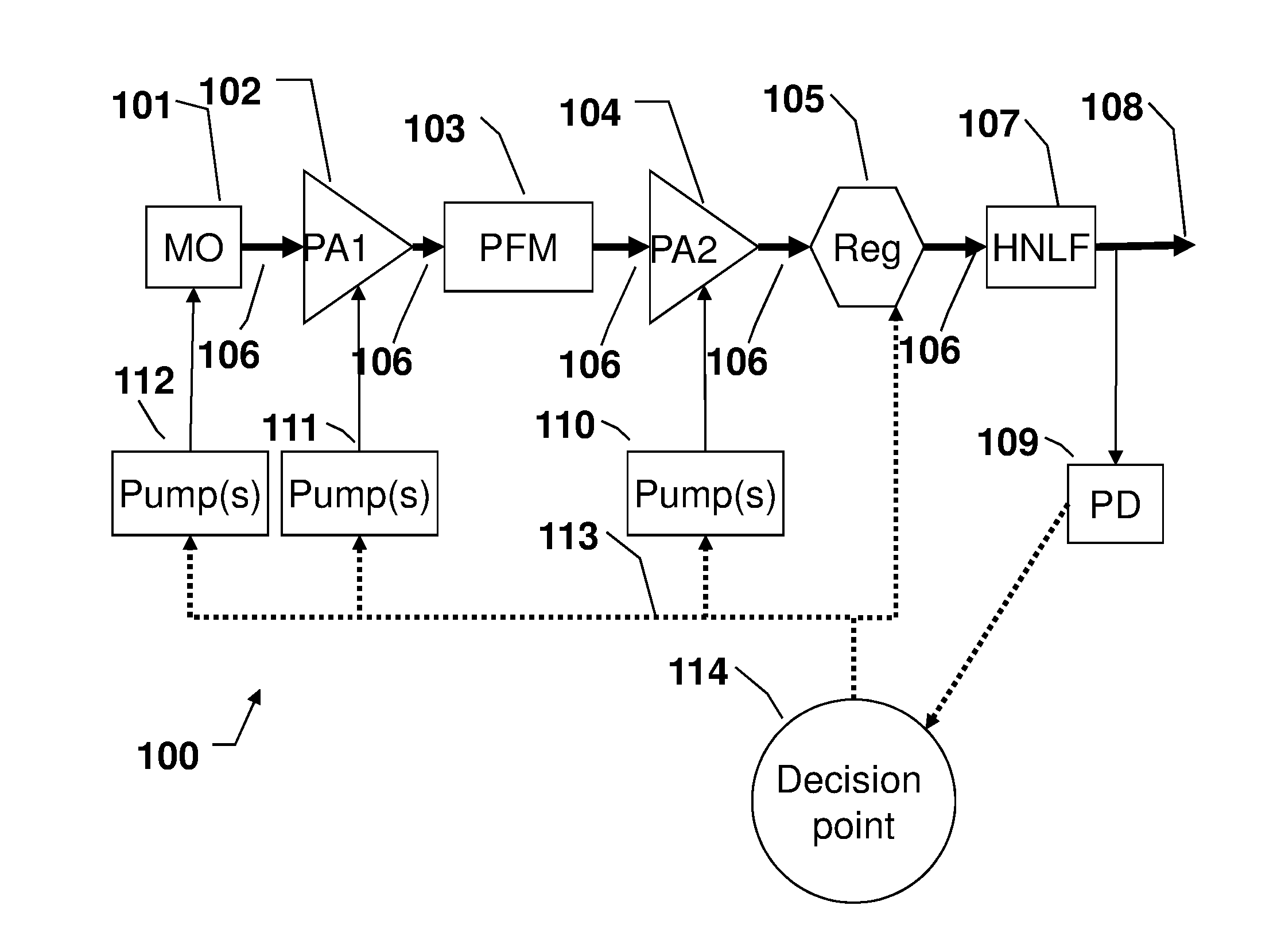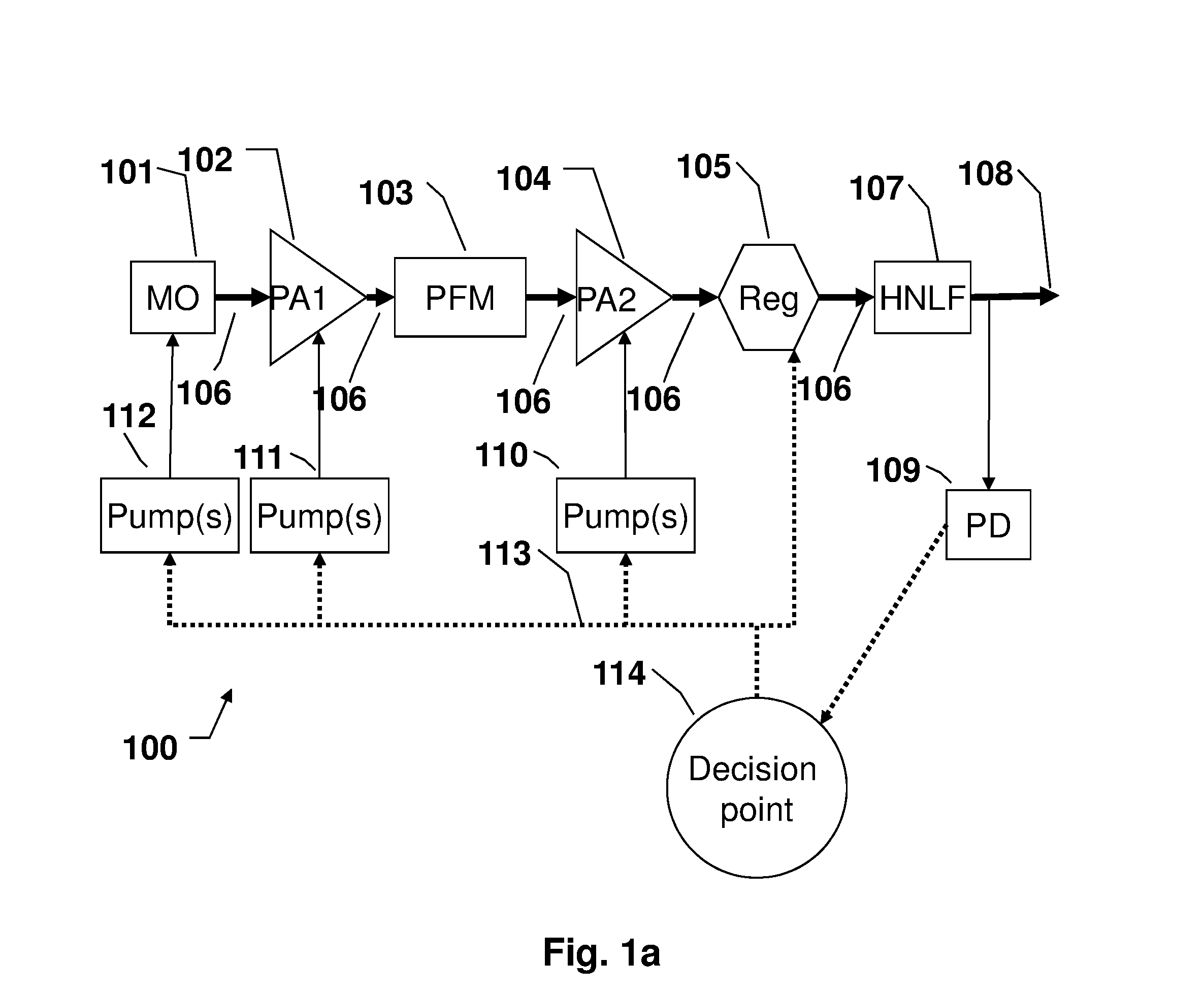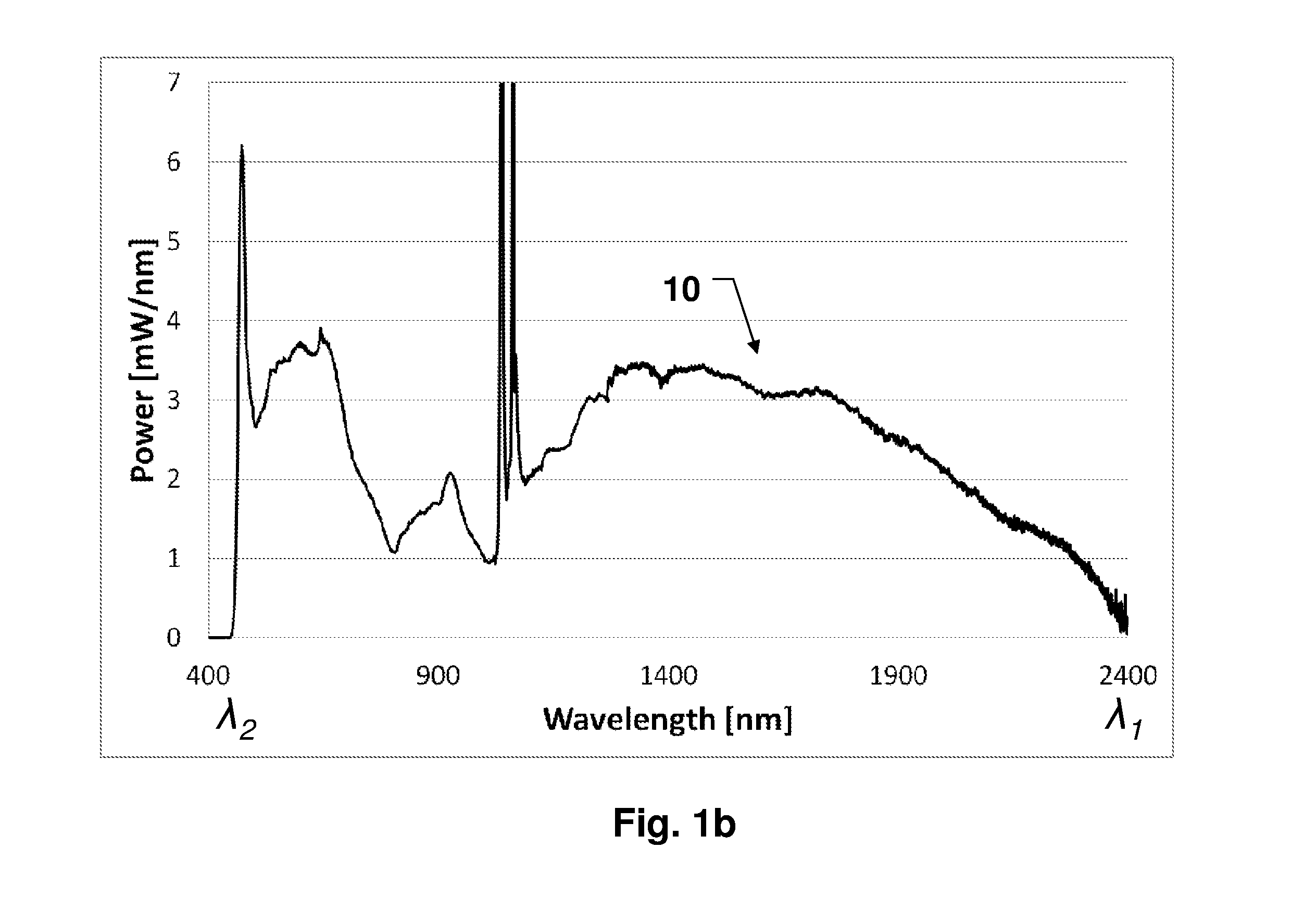Supercontinuum light source, a system and a method of measuring
- Summary
- Abstract
- Description
- Claims
- Application Information
AI Technical Summary
Benefits of technology
Problems solved by technology
Method used
Image
Examples
Embodiment Construction
[0072]FIG. 1a shows a schematic intermediate supercontinuum light source suitable for the present invention.
[0073]FIG. 1b shows an example of a supercontinuum spectrum (10) spanning from λ2 being about 460 nm to λ1 being about 2400 nm.
[0074]FIGS. 2a and 2b show examples of pulse frequency modulators (PFM) of an intermediate supercontinuum light source according to the present invention.
[0075]FIG. 3a shows measurement setup suitable for measuring intensity noise in the spectrum of a SC light source, such as that of FIG. 1.
[0076]FIG. 3b shows an example of a supercontinuum spectrum output from the intermediate supercontinuum light source 100, as well as an example of the spectrum output from the single mode coupling unit 300, respectively.
[0077]FIGS. 3c, 3d and 3e show exemplified spectra output from the single mode coupling unit.
[0078]FIGS. 4a and 4b show the average intensity noise of an intermediate supercontinuum light source after and prior to compensation for spectrometer noise....
PUM
 Login to View More
Login to View More Abstract
Description
Claims
Application Information
 Login to View More
Login to View More - R&D
- Intellectual Property
- Life Sciences
- Materials
- Tech Scout
- Unparalleled Data Quality
- Higher Quality Content
- 60% Fewer Hallucinations
Browse by: Latest US Patents, China's latest patents, Technical Efficacy Thesaurus, Application Domain, Technology Topic, Popular Technical Reports.
© 2025 PatSnap. All rights reserved.Legal|Privacy policy|Modern Slavery Act Transparency Statement|Sitemap|About US| Contact US: help@patsnap.com



